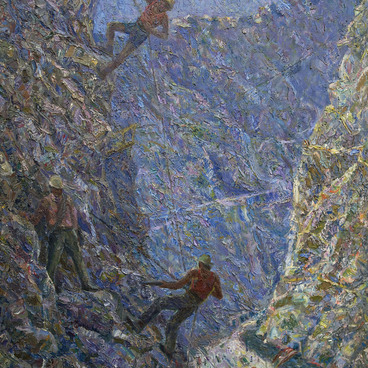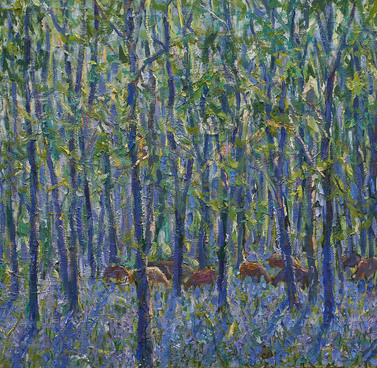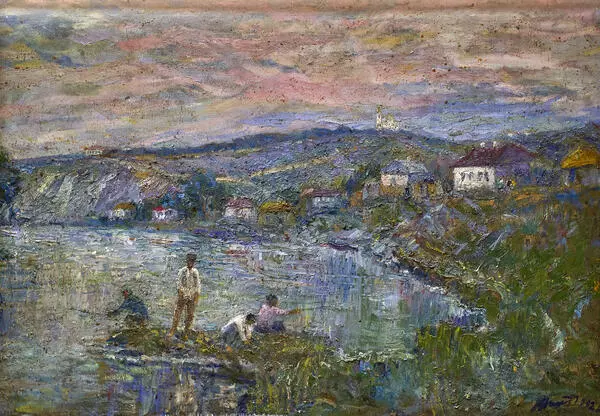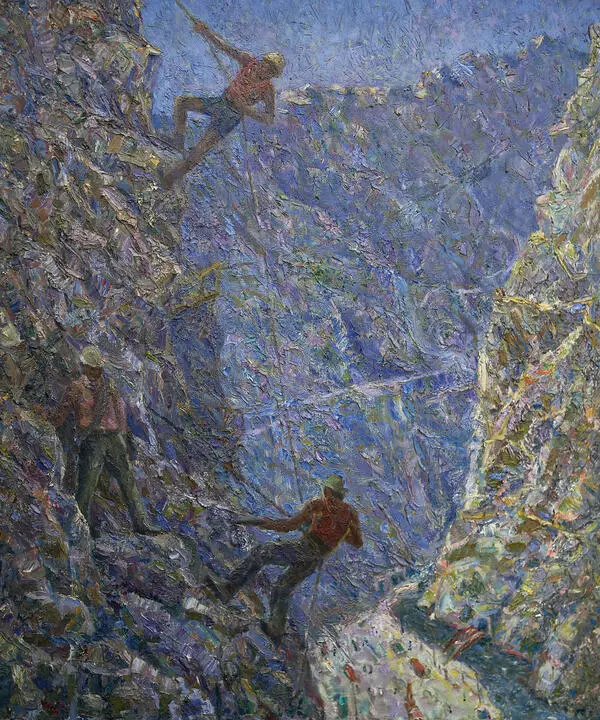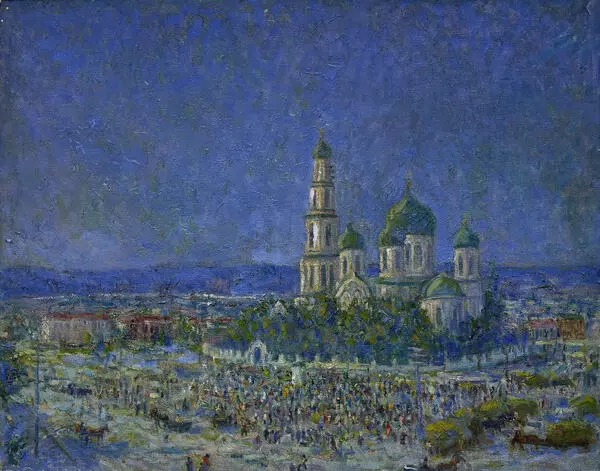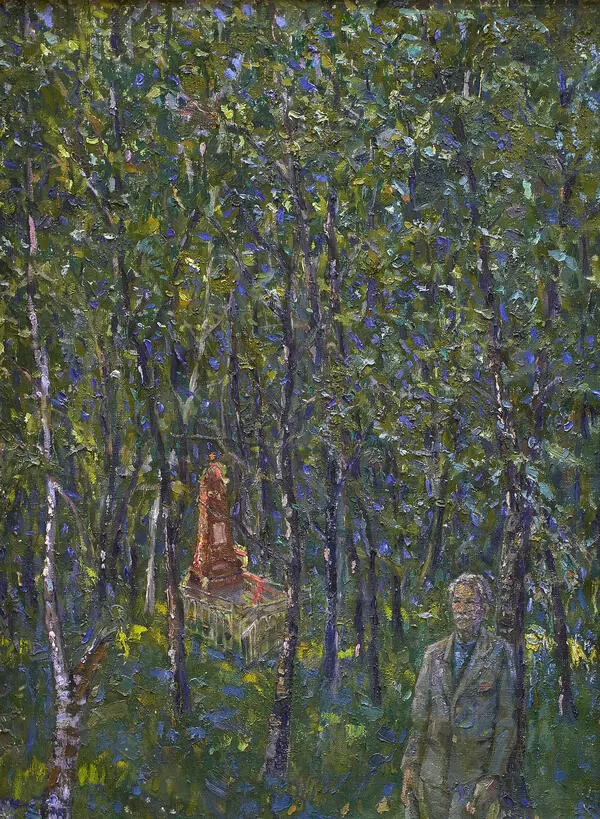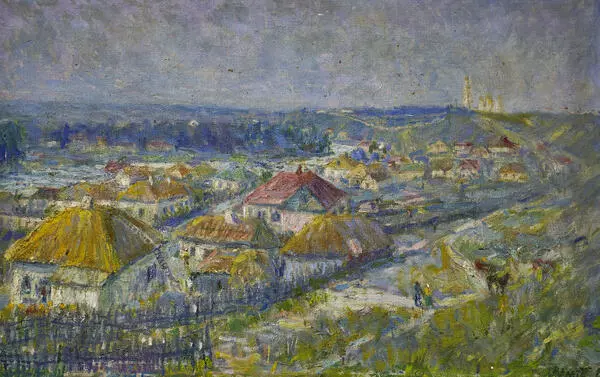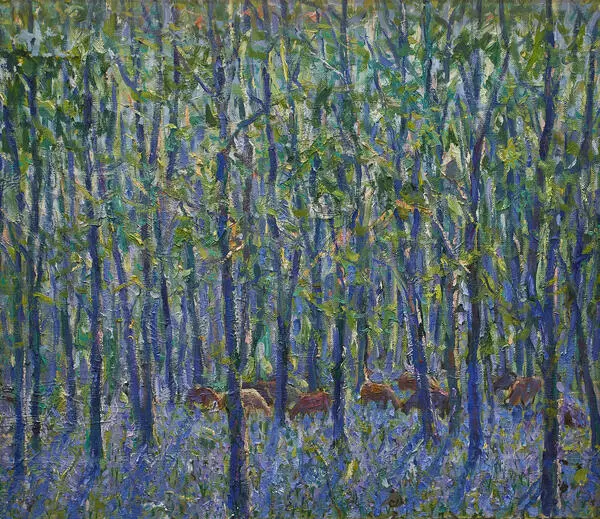‘On Kursk bulge today’ was created by Alexander Ignatiev, founder of the Valuy Museum of Fine Arts, People’s Artist of the Kyrgyz SSR, corresponding member of the Academy of arts of the USSR, laureate of the State Prize of the Kyrgyz SSR named after Toktogul.
The artist was born in Valuyki. He has been depicting his home and historical monuments on paper from a young age. But most of all, the amateur artist loved to paint nature. It influenced him to choose favor of his creative path for the future.
During his professional career, Alexander Ignatiev wrote over a hundred works in the collections of the top museums in Russia. The State Tretyakov Gallery purchased one of his paintings.
There are more than 30 works of the master in the Valuy Museum of History and Art holdings. Alexander Ignatiev’s painting features include a vivid sense of color, a competent composition of paintings, and a broad brush stroke.
Ignatiev created ‘On Kursk bulge today’ for the 40th anniversary of the Great Victory. The artist himself did not have a chance to fight, but his younger brother, Sergey Ignatiev, fought with the enemy on the fronts of the Great Patriotic War.
The artist was concerned about all the military events. On the second day of the war, he created ‘Be vigilant’ ‘Be on guard to protect the fields! ’ posters. At Ignatiev’s initiative, the Kyrgyz artists began to produce “Kir TAG OKNA, ” which played an important propaganda role.
“On Kursk bulge, today” has many sunny and bright colors, and the sky occupies most of the canvas. It is not solemn but elevated, with light clouds. In the foreground is an elderly man who came to the sunflower field with his granddaughter to tell what happened at this place 40 years ago. It is generally believed that Ignatiev depicted himself on the canvas.
From July 5 to August 23, 1943, on Prokhorovsky field, battles of the Battle of Kursk rattled. The battle involving more than six thousand tanks shook the ground. Even in peacetime, the Belgorod fields drenched in the blood of Soviet soldiers remind us of the war: in some places, you can see traces of shells that changed the landscape for a long time. Now, there is a boundless sea of sunflowers that have grown on Prokhorovsky field. It was from here that the enemy turned back in 1943.
The artist was born in Valuyki. He has been depicting his home and historical monuments on paper from a young age. But most of all, the amateur artist loved to paint nature. It influenced him to choose favor of his creative path for the future.
During his professional career, Alexander Ignatiev wrote over a hundred works in the collections of the top museums in Russia. The State Tretyakov Gallery purchased one of his paintings.
There are more than 30 works of the master in the Valuy Museum of History and Art holdings. Alexander Ignatiev’s painting features include a vivid sense of color, a competent composition of paintings, and a broad brush stroke.
Ignatiev created ‘On Kursk bulge today’ for the 40th anniversary of the Great Victory. The artist himself did not have a chance to fight, but his younger brother, Sergey Ignatiev, fought with the enemy on the fronts of the Great Patriotic War.
The artist was concerned about all the military events. On the second day of the war, he created ‘Be vigilant’ ‘Be on guard to protect the fields! ’ posters. At Ignatiev’s initiative, the Kyrgyz artists began to produce “Kir TAG OKNA, ” which played an important propaganda role.
“On Kursk bulge, today” has many sunny and bright colors, and the sky occupies most of the canvas. It is not solemn but elevated, with light clouds. In the foreground is an elderly man who came to the sunflower field with his granddaughter to tell what happened at this place 40 years ago. It is generally believed that Ignatiev depicted himself on the canvas.
From July 5 to August 23, 1943, on Prokhorovsky field, battles of the Battle of Kursk rattled. The battle involving more than six thousand tanks shook the ground. Even in peacetime, the Belgorod fields drenched in the blood of Soviet soldiers remind us of the war: in some places, you can see traces of shells that changed the landscape for a long time. Now, there is a boundless sea of sunflowers that have grown on Prokhorovsky field. It was from here that the enemy turned back in 1943.


